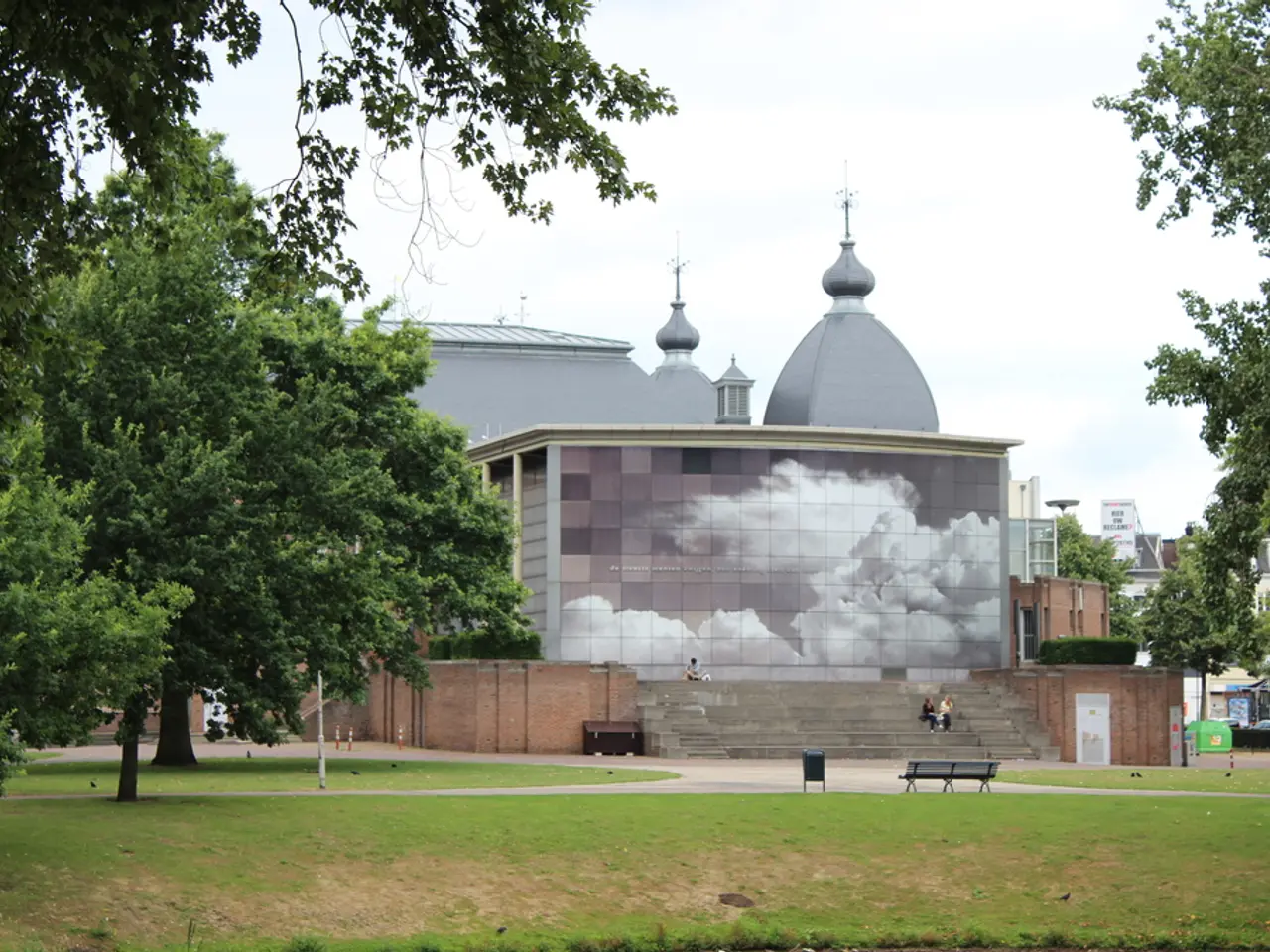Exploring an English garden? Here are five often-overlooked aspects to be mindful of during your next visit.
Overlooked Gems in English Country Gardens
English country gardens are renowned for their beauty and historical significance, but there are several features that often go unnoticed. These hidden gems, such as ha-has, Lutyens' Peacock topiaries, hermitage garden follies, hot walls, and turf benches, each hold unique historical and functional importance.
Ha-has
A ha-ha is a sunken wall or ditch that serves as a boundary to keep grazing animals out of the garden while maintaining an uninterrupted view of the surrounding landscape. This clever feature creates an invisible barrier, seamlessly blending the garden with the surrounding countryside [1].
Lutyens' Peacock Topiaries
Edward Lutyens, a renowned British architect, popularized the Peacock topiary, a sculpted yew or boxwood bush trimmed into shapes resembling peacocks. These artistic and whimsical additions provide a formal yet playful focal point that enriches the garden’s visual interest [1].
Hermitage Garden Follies
Hermitage follies are small ornamental buildings or structures designed to resemble rustic retreats or classical temples. They serve as focal points or places of contemplation within the garden, adding a picturesque and sometimes romantic quality that reflects historical garden fashions [1].
Hot Walls
In walled gardens, hot walls were ingeniously constructed to warm plants, especially exotic fruit, in the era before modern heating. Walls had cavities near the base where straw was burnt or later pipes circulated hot water, creating a microclimate to help tender plants ripen [1]. Visible features include old furnaces at the base, ventilation holes, or chimneys on the walls. Examples survive at places like Chelsea Physic Garden, Royal Botanic Gardens Kew, and Arundel Castle [1].
Turf Benches
Turf benches, a common feature of 14th-century medieval gardens, can still be found in many classic country gardens, though they can be tricky to spot. These benches, with brick or woven frames packed with soil and topped with turf, blend seating naturally into the garden’s greenery and were often placed centrally or against walls [1]. If you see a turf bench in a garden, you may also find them in paintings and tapestries.
These features, while integral to traditional English country garden design, are frequently overlooked but reveal the thoughtful blend of beauty, utility, and history that characterizes these gardens [1].
Some additional information:
- The name 'ha-ha' is thought to have originated from an exclamation of surprise on realizing the optical illusion.
- Hot walls were heated before the advent of cast iron piping by burning straw in a cavity at the base of the wall.
- Hermitage garden follies were often built to appear ancient and historically significant, with buildings from a bygone era or new ones purposely built to appear archaic.
- In the Georgian era, hermitage garden follies became something of a competitive sport, with them becoming more flamboyant and decorative.
- Many wealthy landowners had the eccentric idea of employing an 'ornamental hermit' to live in their garden follies, giving the impression of a primeval, almost magical landscape.
- Lutyens' peacock topiary remains unerringly popular despite the pendulum of fashion swinging away from topiary.
- Hot walls are still found in some gardens today, serving as a reminder of historical gardening practices.
- Evidence of old hot walls can be seen in many gardens, such as Chelsea Physic Garden, Royal Botanic Gardens Kew, and Arundel Castle.
- Lutyens had a long and esteemed career as a garden designer, particularly in Surrey and Sussex, and was highly influential in shaping 20th-century garden design.




